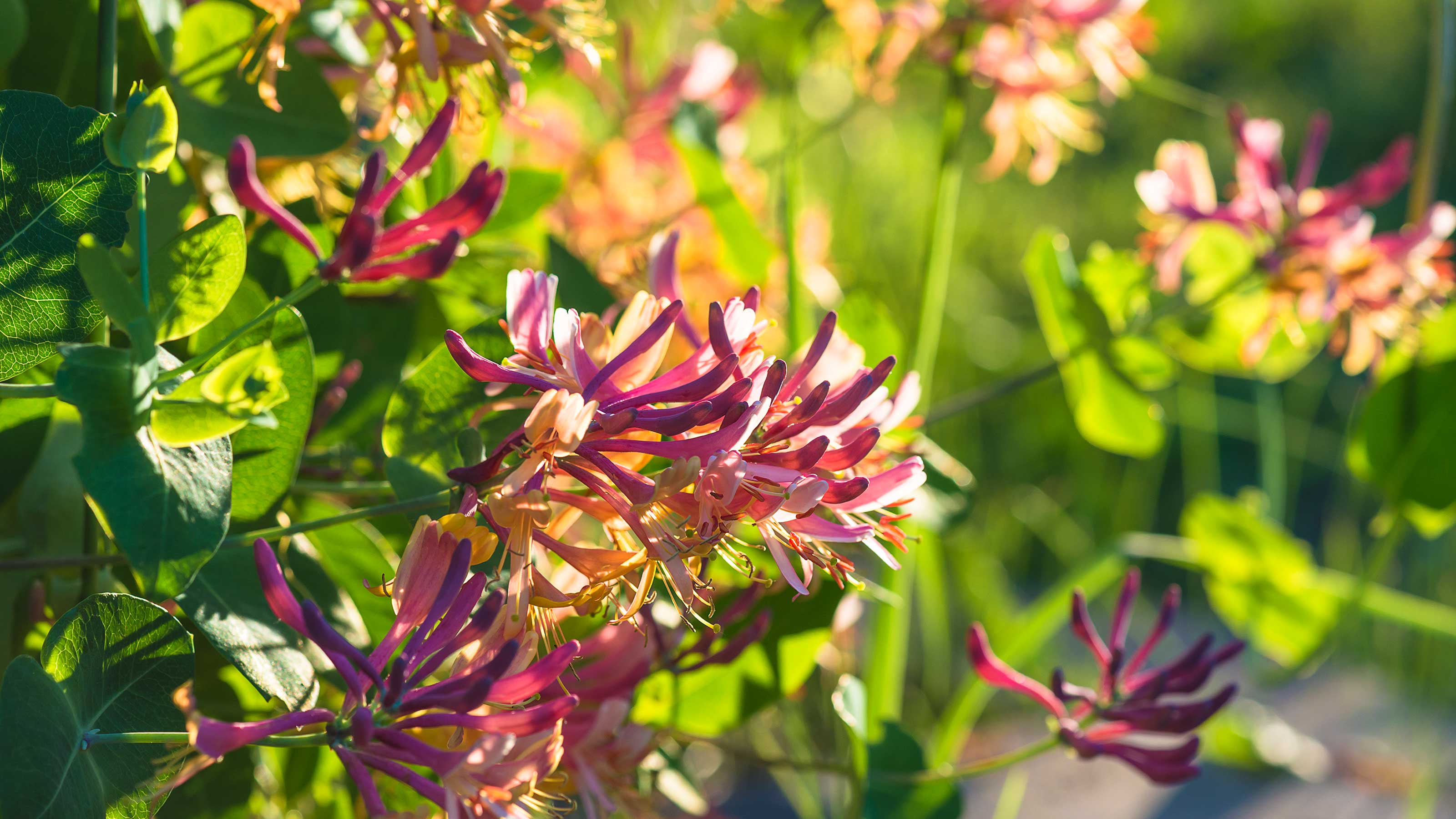Pruning honeysuckle: simple tips for tidying up these fragrant beauties
Pruning honeysuckle is a straightforward job but will reward you with healthier and better-shaped plants – our guide explains all


Although pruning honeysuckle isn't strictly necessary every year, it's a simple way to keep it in shape for the space it's in, and remove any unsightly, damaged areas. Plus, doing so will encourage healthy new shoots and blooms for the following season.
So, it's well worth factoring it into your honeysuckle care routine. These fragrant, climbing, cottage-garden favorites will certainly reward you for your efforts, whether you're training it up a garden wall or around a patio pergola.
Pruning honeysuckle in your garden – how and when to do it
You'll find plenty of info on how to prune honeysuckle in this guide – the only other thing you'll need is your trusty pair of best secateurs (making sure they're sharp and clean).

How to prune early-flowering honeysuckle
Early-flowering honeysuckles (the ones that generally bloom from around mid to late spring onwards) produce flowers on side shoots on the previous season's growth. The best time for pruning honeysuckle of this type is straight after they've bloomed, in late summer.
To do so, simply cut the flowered shoots back by a third, to make the display tidier next year. You can also cut off any dead or diseased wood back to healthy growth to improve the condition and overall look of the plant. However, leave dead flower heads if possible, as these will turn into berries.
Honeysuckles are perfect for vertical garden ideas in compact spaces. If yours is planted in a very tight spot, you can maximize its blooming potential by cutting back the side shoots to create short spurs of two or three buds coming from the main stems, as recommends the RHS.

How to prune late-flowering honeysuckle
Late-flowering varieties of honeysuckle usually bloom from mid-summer to mid-fall. They flower on the current season's growth, so it's best to prune them in spring.
They only require the lightest of trims – if you go in too hard this will reduce the number of flowers you get later in the year.
All you need to do is tidy up the overall shape of these climbing plants and thin out congested areas and weaker, damaged, or wayward stems, leaving a strong framework.

How to prune winter-flowering honeysuckle
One of the best winter-flowering shrubs, winter-flowering honeysuckle will add gorgeous fragrance to your garden. It will usually finish flowering around early spring, which is the best time to prune it if it needs a tidy-up.
They fall into the RHS's 'Pruning Group 2', which means flowered growth should be cut back to strong young shoots lower down. You can also cut out up to 20 per cent of aging stems to near the base annually, they advise.

How can you renovate an old honeysuckle?
If you have an established honeysuckle that's looking a little congested at the top, sparse at the bottom, and generally lackluster, a good pruning can help to refresh it to get it back to its former glory.
The RHS advises doing this in mid-winter, by cutting back stems to a height of 2ft (60cm). As new shoots grow, pick the best ones to create a new framework over your garden trellis or other structure. According to plantsman Toby Buckland, writing for Amateur Gardening, the plants may miss a year's flowering but will bloom as normal after that.
Doing this job in winter means you'll avoid disturbing any birds, as it won't be nesting season. On the other hand, if you're looking for wildlife garden ideas, you may simply wish to leave your climber as is. Robins, wrens, and other small feathered friends will love to use the tangle of branches for shelter.

The garden was always a big part of Holly's life growing up, as was the surrounding New Forest where she lived. Her appreciation for the great outdoors has only grown since then. She's been an allotment keeper, a professional gardener, and a botanical illustrator – plants are her passion.
